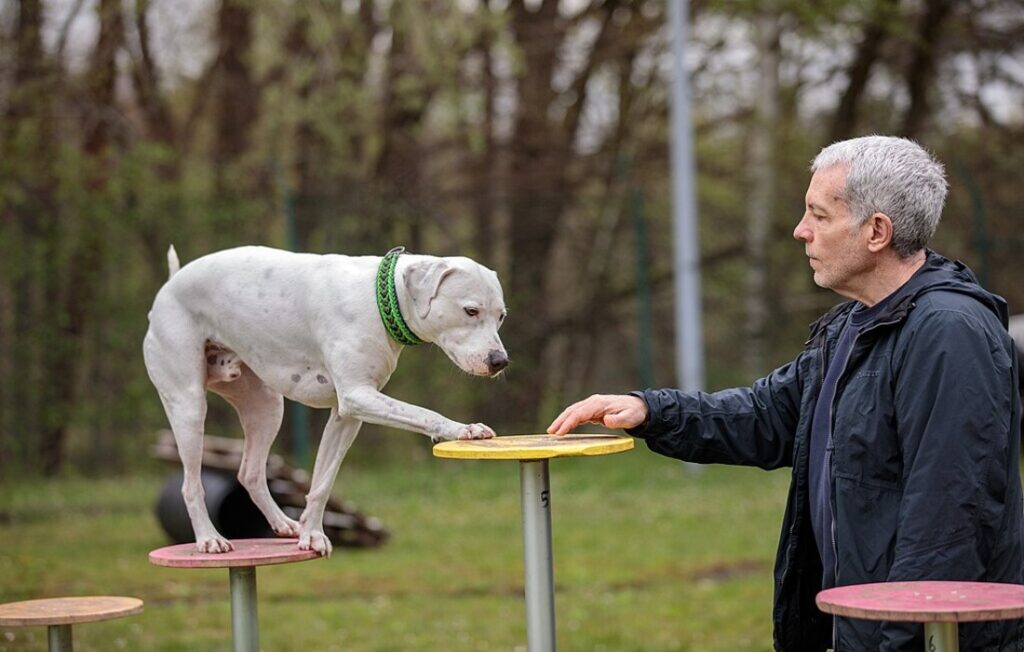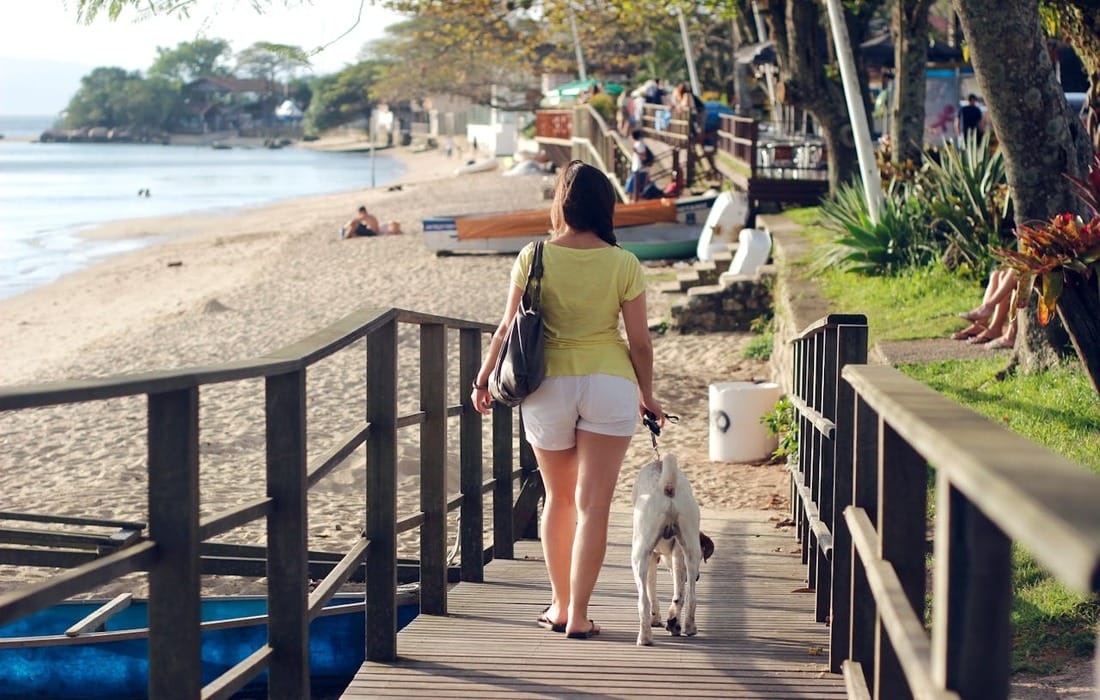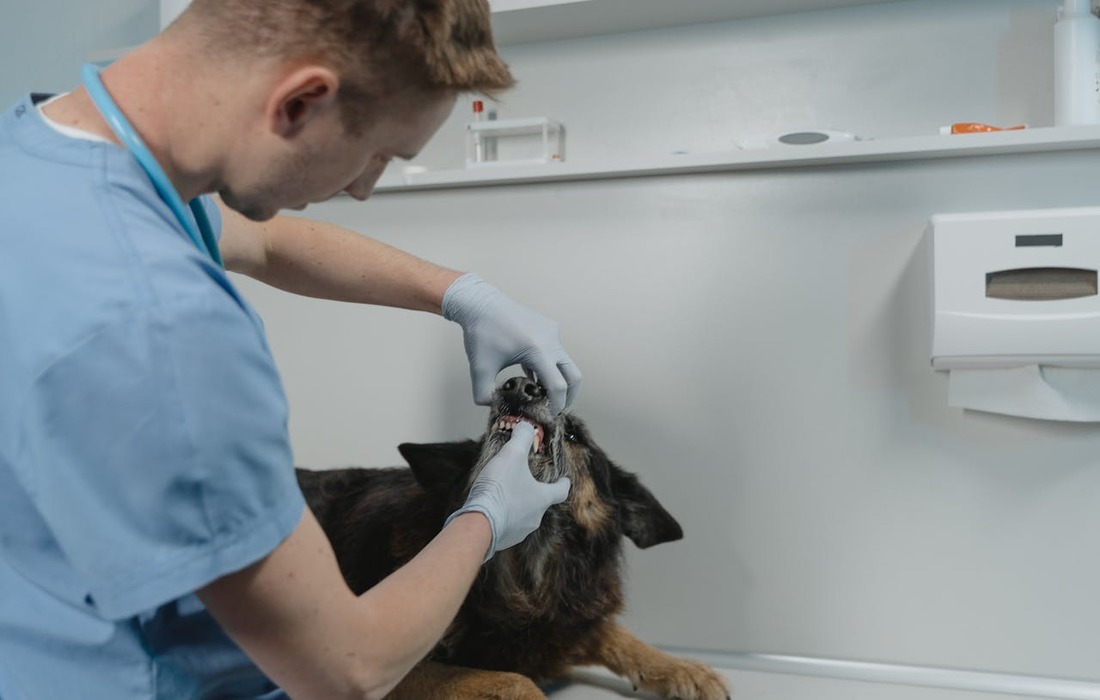If you’re like me, you probably daydream about the freedom of letting your dog roam freely without a leash. It’s an image many dog parents share—your pup running through the park, ears flopping in the wind, completely carefree. But, here’s the thing: getting from that daydream to reality isn’t as simple as just letting go of the leash. Off-leash training is a process that takes time, patience, and the right approach.
But why bother with off-leash training? Well, for starters, it offers your dog more freedom, strengthens the bond between the two of you, and can actually improve their behavior and safety. The good news? It’s totally possible with the right training steps.
In this guide, I’ll walk you through how to train your dog to be off-leash, covering everything from the basics to more advanced techniques—all while making sure both you and your dog have a safe, positive experience.
What Is Off-Leash Training, Exactly?
Off-leash training is about teaching your dog to listen to you and follow commands without being tethered to a leash. It’s more than just walking without a leash; it’s about making sure your dog responds to your cues, no matter where you are or what distractions are nearby. Whether it’s at the park, on a hike, or just in your own backyard, the goal is for your dog to stay safe and behave well, even without the constant supervision of a leash.
The secret to successful off-leash training is building trust and communication. The stronger your bond with your dog, the more reliable their behavior will be, even when they’re off-leash.
Why Should You Train Your Dog to Be Off-Leash?
There are plenty of reasons why off-leash training can be a game-changer for both you and your dog. Here’s why you might want to give it a try:
- Better Recall & Safety
- A strong recall (getting your dog to come back when called) is critical in emergencies, like if they run towards a busy street or encounter a wild animal. With off-leash training, you can quickly call your dog back to you, helping to keep them safe.
- Freedom and Confidence for Your Dog
- Dogs love to explore. Giving your dog the freedom to roam and sniff around can do wonders for their confidence. It reduces anxiety and helps them develop better social skills.
- Strengthened Bond
- Off-leash training requires a lot of communication and patience. As you work together, your bond with your dog will grow stronger. They’ll learn to trust you, and you’ll enjoy the rewards of having a well-behaved dog.
- Improved Behavior
- Dogs that are always on a leash can develop leash frustration or reactivity. Off-leash training lets them learn how to behave calmly and stay focused, even when distractions are present.
- More Fun Activities
- With off-leash control, your dog can join you on fun adventures like hiking, running, or playing in the park. They’ll get more out of the experience when they’re free to roam and explore.
The Essential Steps to Off-Leash Training


Training your dog to be off-leash isn’t something that happens overnight. It’s a gradual process that builds on trust and consistent practice. Here’s a roadmap to guide you through the journey:
Step 1: Start with Basic Obedience
Before you even think about taking the leash off, your dog needs to have a solid grasp of basic commands like:
- Sit
- Stay
- Come
- Down
- Heel
These are the foundational commands that will make off-leash training possible. If your dog doesn’t reliably follow these commands while on a leash, they won’t be ready to go off-leash just yet. Focus on mastering these first.
Step 2: Master Leash Training
Leash training is your dog’s first step toward being off-leash. They need to learn how to walk calmly by your side without pulling, as well as how to follow your cues. If they’re constantly pulling on the leash, it’ll be harder to transition to off-leash training. So, work on leash manners before moving forward.
Step 3: Introduce a Long Leash
Once your dog is doing well with basic obedience and leash walking, it’s time to introduce a long leash (or training lead). A long leash gives your dog more freedom to roam but still allows you to maintain control. Use this to practice recall and other commands, gradually increasing the distance between you and your dog.
While using the long leash, reward your dog with treats, praise, and play when they follow your commands. If they don’t respond, gently reel them in and try again.
Step 4: Focus on Recall and Stay
A reliable recall is key to successful off-leash training. Start practicing “come” and “stay” with the long leash, rewarding your dog when they return to you on command. As they get more consistent, try practicing “stay” at greater distances.
The goal is to eventually be able to call your dog back to you even from far away, even if there are distractions like other dogs or people nearby.
Step 5: Start Off-Leash in a Safe Area
When your dog is consistently responding to commands with the long leash, it’s time to try some off-leash work. Start in a safe, enclosed area like your backyard or a dog park with few distractions. Let your dog roam freely, but continue practicing basic commands. Reward them for good behavior with treats and praise.
As your dog gets more comfortable, you can start introducing more distractions and moving to larger, open areas like parks or beaches. If you’re unsure how they’ll react, keep them on a long leash or harness for extra safety.
Step 6: Proofing and Real-World Practice
To get truly reliable off-leash behavior, your dog needs to prove they can follow commands in real-world situations. This is called proofing, and it’s all about practicing obedience in different environments with varying levels of distractions.
Practice in busy parks, near traffic, or around other dogs. Each time your dog successfully follows a command despite the distractions, reward them generously. This process takes time, so be patient.
Step 7: Gradual Off-Leash Freedom
Once your dog has consistently demonstrated reliable recall and obedience in a variety of environments, you can start giving them more freedom. Let them explore off-leash in safe areas, always keeping a close eye on them. Be ready to call them back if they wander too far or get into a potentially risky situation.
Even when your dog is off-leash, keep them in safe environments, especially while they’re still learning. Their off-leash reliability will improve with time and experience.
Troubleshooting Common Challenges
Off-leash training is rewarding, but it can come with challenges. Here’s how to tackle some common hurdles:
- Distractions
- Dogs love distractions—other animals, people, smells, you name it. If your dog is distracted, take a step back and practice in less stimulating environments. Gradually increase the level of distraction as your dog improves.
- Fear of Straying
- Some dogs are naturally more cautious and may hesitate to venture too far from you. Encourage exploration with treats or toys, and slowly build their confidence.
- Inconsistent Training
- Consistency is key. Make sure you’re practicing regularly and reinforcing commands in the same way each time. This helps your dog understand what’s expected.
- Running Away
- Some dogs, especially those with a high prey drive, might be tempted to run off. If this happens, don’t punish your dog. Instead, focus on strengthening their recall and gradually building more control.
The Bottom Line: Patience is Key
Off-leash training isn’t something that happens overnight, but with patience, consistency, and positive reinforcement, it’s totally achievable. The goal is to build a strong foundation of obedience, slowly increase your dog’s freedom, and always ensure they respond to your commands reliably.
At the end of the day, off-leash training isn’t just about letting your dog run free—it’s about building trust, improving communication, and ensuring your dog stays safe, happy, and well-behaved. Stick with it, and soon you’ll be watching your dog run joyfully through the park, completely off-leash and fully under control.













